Meet SHERP: The All-Terrain Vehicle Helping Us Save Lives in the Hardest-to-Reach Places
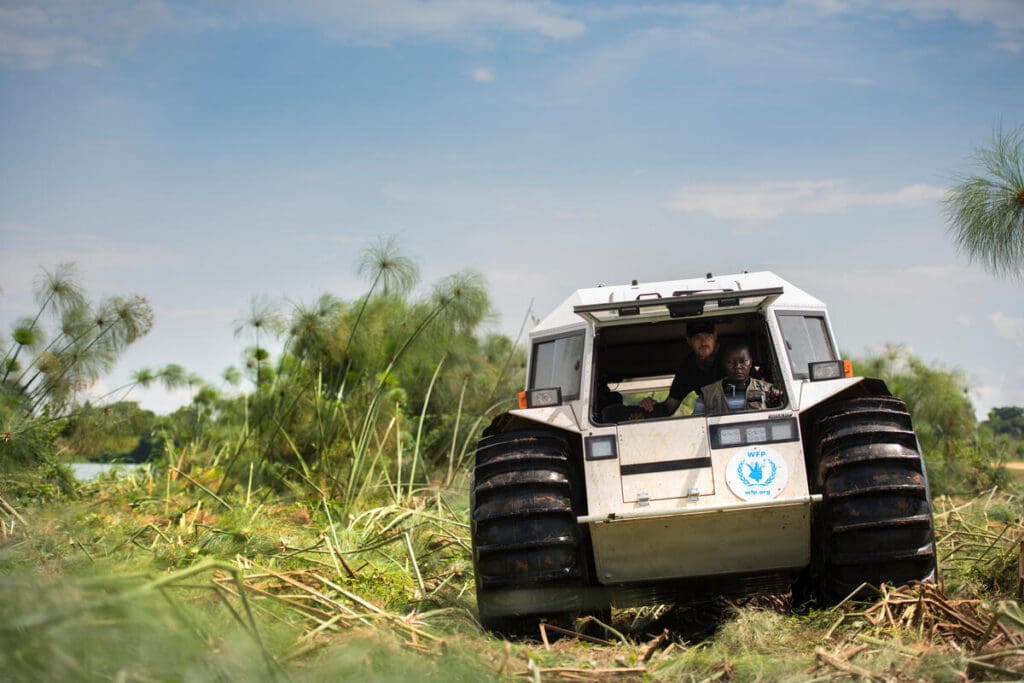
The world’s hungriest people often live in remote, difficult-to-access places. Sixty percent of them live in conflict zones, where moving supplies is difficult and dangerous, and where people are often displaced and cut off from the help they need.
The success of our most important humanitarian missions often comes down to the last mile: a flooded landing strip, a blocked access point or a bombed-out stretch of road that stands between food assistance and a desperate community. The last mile is a potentially dangerous, impassable hiccup that can undermine an entire United Nations World Food Programme (WFP) operation.
But now, we’ve got a new way to make sure we can reach those who need our help the most. It’s an amphibious vehicle, a sort of all-terrain tank with inflatable wheels, called a SHERP. SHERPs are like humanitarian monster trucks, and they’re helping us reach the communities most desperate for our help: ones who’ve been cut off from their homes, farms and jobs by war, violence, natural disasters and more.
Why Do We Need a Monster Truck, Anyway?
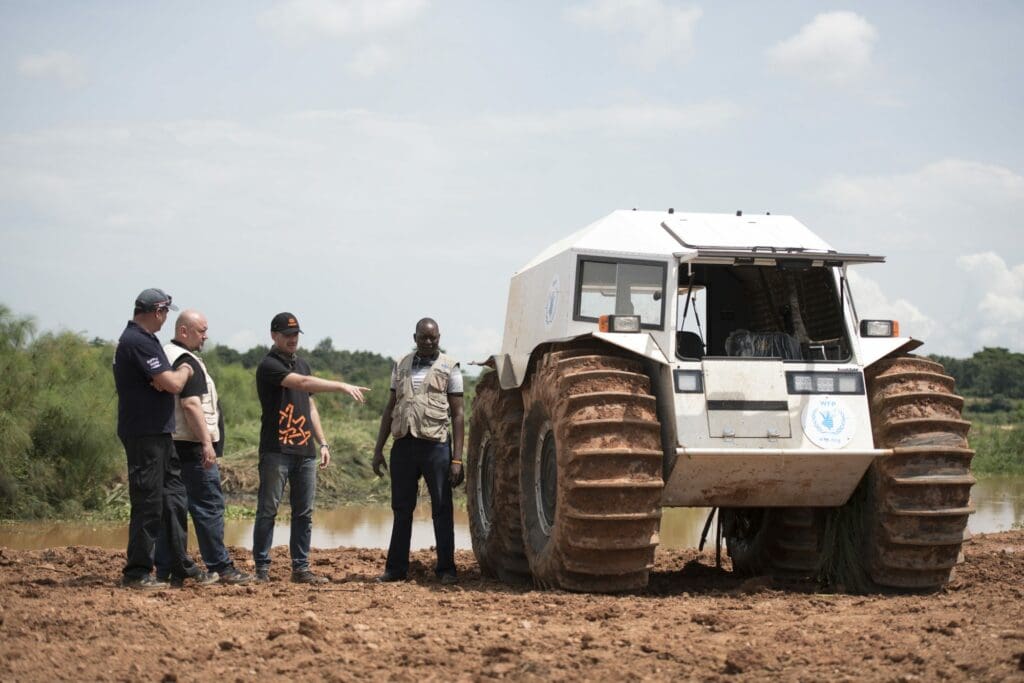
Here in Uganda, SHERPs are used to deliver food despite widespread flooding.
After twenty years in development, these Ukraine-made off-road vehicles can move across any surface – like swampy marshes, or the bumpiest, unpaved roads – and take on even the most difficult natural obstacles. They can float and climb hurdles over three feet high while holding up to one ton of precious cargo – like nutritious, lifesaving food.
Even more, these amphibious machines have very low fuel consumption, running for around 300-400 miles on a full tank. They are helping us deliver food to places that were once only reachable by air, which was vastly more expensive.
SHERPs can even be remote controlled, and that means keeping our human drivers out of dangerous situations. Drivers transporting aid supplies are often at risk, especially during outbreaks of infectious disease, after natural disasters, and in conflict zones where armed attacks on humanitarian convoys are increasing.
“Many operations take place in high-risk environments, such as in regions of civil unrest, civil wars and/or in fragile states experiencing conflict,” said Kyriacos Koupparis, head of Frontier Innovations for the U.N. World Food Programme Innovation Accelerator in Munich. “Difficult conditions are unfortunately ubiquitous for the drivers of our relief convoys.”
Using these robotic, remote-controlled vehicles in impassable, unknown terrain gives us a much better chance of getting past the last, most dangerous part of an aid mission route to safely reach people in desperate need of supplies.
When a Cyclone Destroyed Mozambique, We Turned to SHERP
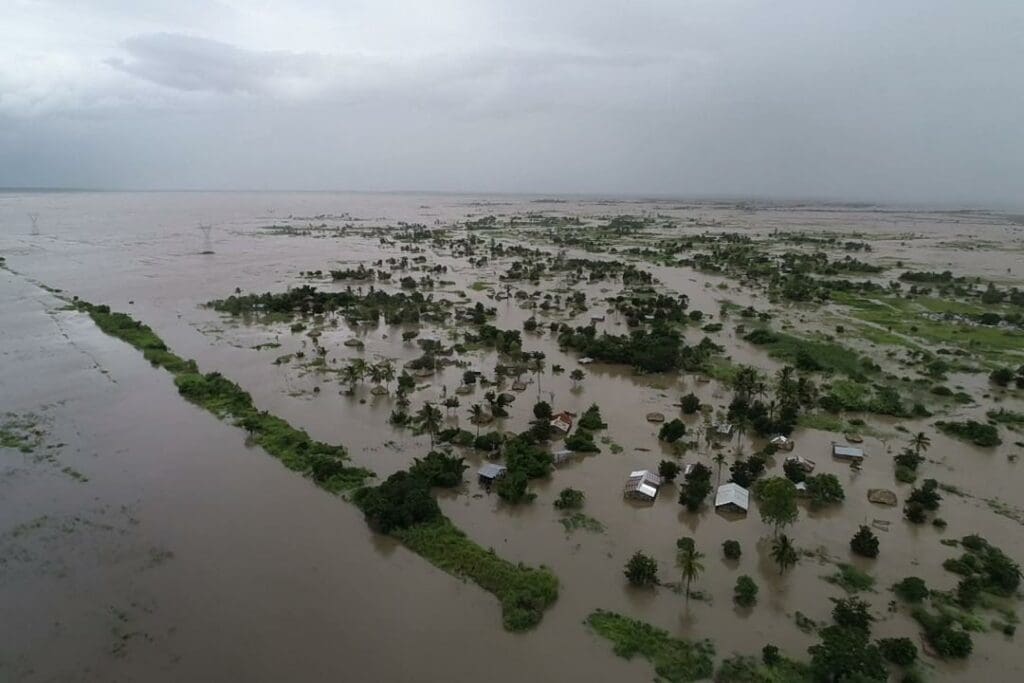
In 2019, Mozambique was struck by the strongest cyclone on record. It flooded hundreds of thousands of acres of farmland.
Buzi, a rural area in northern Mozambique, was nearly devastated by Cyclone Idai last year. Surrounded by water on all sides, homes and farms were flooded for an entire week. Families waited for emergency assistance in treetops, some for up to three days. Grain storehouses were flooded, and livestock drowned or fled to higher ground.
Helicopters and boats were able to deliver some assistance to displaced families. But when our regular trucks set out for Buzi with more supplies, the dirt road was so waterlogged that they sank, fell together and caused a pile-up. Instead of bringing relief, the convoy itself became a blockade.
Enter SHERP. Adding on another layer of technology, we used drones to scope out the terrain between our stuck-in-the-mud convoy and the families in need, making sure there were no vertical barriers (a SHERP’s only downfall). Those same drones then flew ahead of two SHERPs as they started out, providing drivers with a real-time picture of what lay ahead – inundated rivers, slippery slopes and all. Within the next 48 hours, the all-terrain pair had easily traversed the last 19 miles to Buzi, delivering 26 metric tons of food to a thankful community.
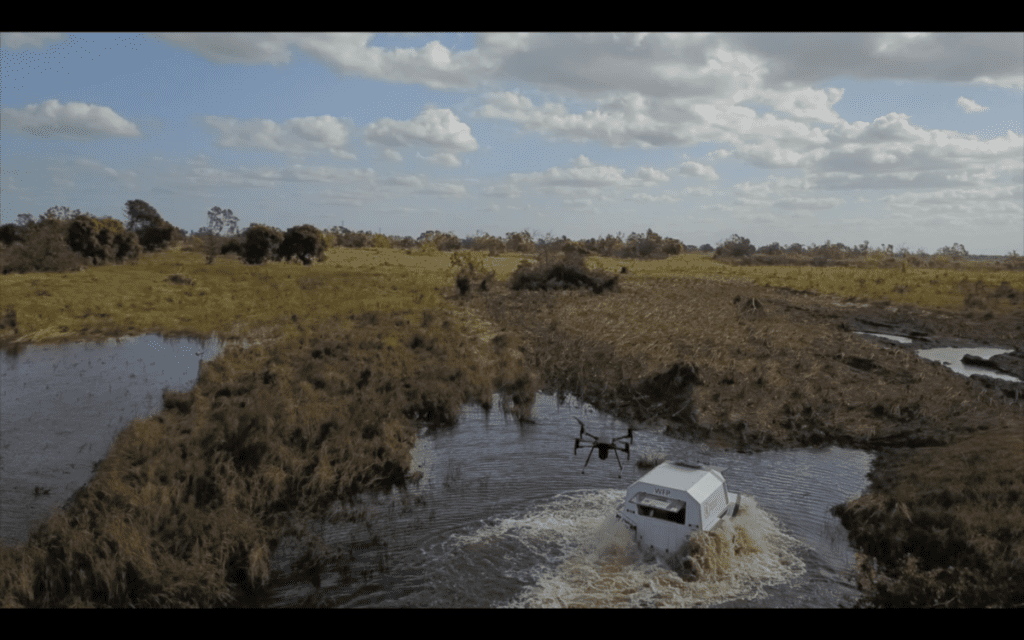
A drone allows the SHERP driver to chart a safe path through the deep water.
Over the Hills and Across the Water: SHERP Saves in South Sudan
In the already conflict-wracked South Sudan, poor infrastructure leaves vast areas of the country isolated during the rainy season, cutting off vulnerable and displaced communities from lifesaving assistance for months at a time. To overcome the challenges of reaching them, we turned to the all-powerful SHERP.
“This vehicle is going to help us a lot,” says Richard Gama, a driver with the U.N. World Food Programme in South Sudan for the past 12 years, who was trained to drive the SHERP. “Sometimes we can’t get the food across to the people as our vehicles can’t pass, so they have to cross the swamps to come and get the food from us.”
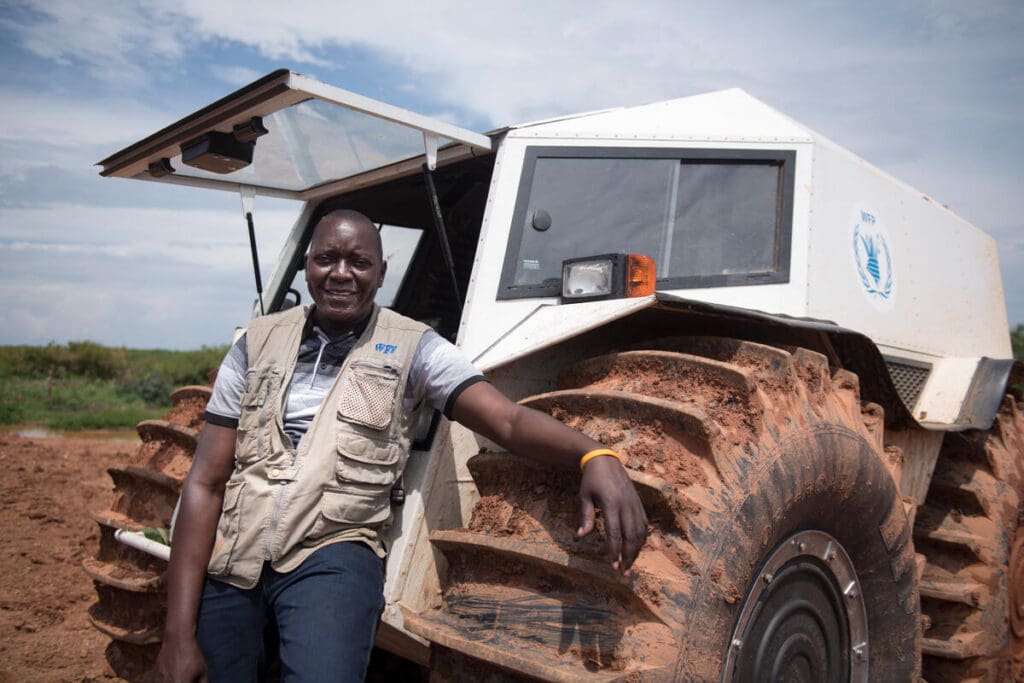
Richard Gama test drives the amphibious all terrain truck.
Easily cruising through heavily flooded areas, the all-terrain vehicle helps us get food to people in hungry, flood stricken areas of the country, regardless of weather conditions or the season.
Where Does SHERP Go From Here?
Beyond Mozambique and South Sudan, SHERP holds great potential for the work of the U.N. World Food Programme and other humanitarian agencies. According to our Global Fleet Team, SHERP could be a worldwide lifesaving innovation, enabling that crucial last-mile access to people cut off by conflict and unrest, or in areas hit by natural disasters like earthquakes and tsunamis.
“To achieve Zero Hunger, the U.N. World Food Programme must be able to get to those beneficiaries who are hardest to reach, either due to natural barriers or, as we see more and more frequently, due to man-made causes such as conflict,” says Stephen Cahill, U.N. World Food Programme Director of Logistics.
Whether it’s destroyed or non-existent roads, flooding or other disasters, or just plain impassable routes, remote-operated vehicles like our SHERPs can make operations safer, faster and cheaper. We’re training drivers and fleet managers around the world, in the most dangerous places, to operate these life saving vehicles.
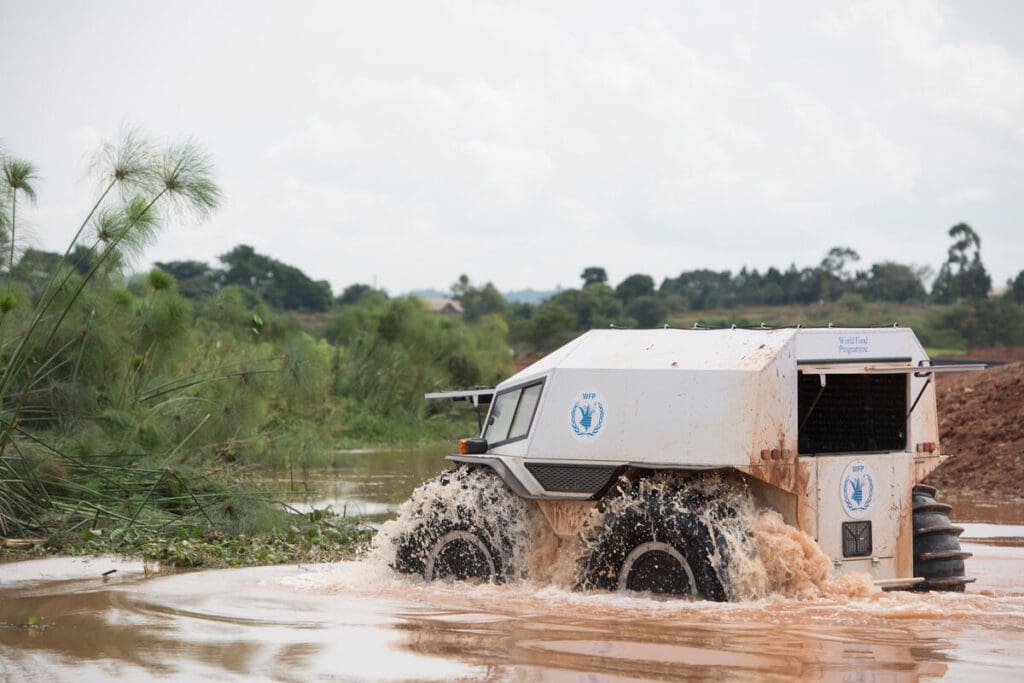
We’ve always gone places that other organizations can’t reach. SHERPs are simply the latest innovation to get us there. Because the further we can go, the more people we can reach, and the more lives we can save.
Help support life-saving innovations like these by donating here.




